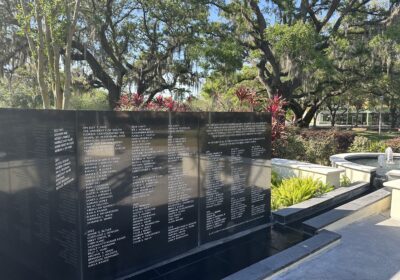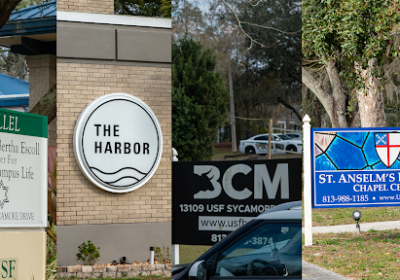Construction for Solar Decathlon close to completion
When students began designing the FLeX House, a net-zero energy house made for average-income families, few thought it would ever be constructed.
Mario Rodriguez, a former graduate assistant at USF, worked with architecture faculty advisor for the FLeX House project Stanley Russell on a research grant to create a design for the energy-efficient house. The design was submitted to the U.S. Department of Energy’s international Solar Decathlon competition, where it was selected to compete against 19 other teams’ net-zero energy houses in September.
Team Florida – students and faculty with backgrounds in engineering, architecture, interior design and mass communications from USF, Florida State University, University of Florida and University of Central Florida – began designing the house during the Summer of 2010 and will soon be ready to ship their competed creation to Washington, D.C.
“It’s quite an honor just to be selected for this event,” Russell said. “The progress is coming along pretty well. Anytime you’re building a prototype, things come along that need to be resolved and slow you down, but overall we’re coming along pretty well.”
Rodriguez, a lead architect who has nursed the project from its beginning stages, said he is ready to see the complete structure.
“It’s really exciting,” he said. “That (the contest) allows opportunities to experience not only the design, but the tangible building of the house. It’s nice to see the house go through the construction process.”
Russell said the FLeX House construction began in May at the Tampa office of Beck Group, the construction company hired to build the structure.
D. Yogi Goswami, co-director of the USF Clean Energy Research Center, said the process of turning the students’ design into a tangible creation, complete with solar photovoltaic and thermal panels to convert energy collected in the daytime and LED and fluorescent lights during night, has been mostly successful.
“We’re hoping that everything will turn into the reality that we were planning,” he said. “Funds are the biggest problem. Raising funds is difficult because you’re asking people to donate to this project, but I think we’ve overcome this problem.”
The project, which Russell said exceeded its goal budget of $200,000, was funded in part by the Florida Energy Systems Consortium, various corporate donors, the USF Foundation and contributions from team members, Goswami said.
Despite the exceeded expenditures on the project, Russel said the FLeX House was designed to be an affordable and commonplace model.
“It’s very much feasible,” he said. “It’s designed so it could be prefabricated and mass produced and be an affordable house for someone earning a moderate income. That was what we were working with as a concept. Being a prototype, of course, it’s been a lot more expensive than if we were able to put it into production and then the cost would come down, simply because the process would become known.”
Rodriguez said much of the cost comes from transporting the home on a semi-trailer from downtown Tampa to the National Mall, where the competition will be held in September. The house will be lifted with a crane and set into its location.
When the competition against other finished homes ends in early October, the model house will be shipped back to the USF Tampa campus, where it will serve as a learning center for visitors.
“I think it will achieve a number of things – this will be a learning resource for students on campus, from laboratory research to design concepts,” Goswami said.
Rodriguez, who said he expects the project to be completed between mid-July and early August, said he believes the project reflects the direction of USF’s future.
“Florida is one of the states that should be really pushing for solar power, and for four Florida universities to be working together, that says a lot for both our school and the state,” he said.






